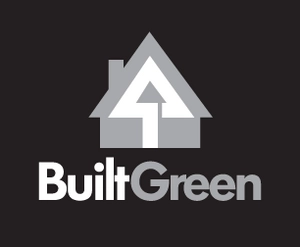So you are looking to begin the journey of a home renovation or custom home build… How are you going to pay for it? Construction financing. This month we have collaborated with Gabe Hoffart, a local mortgage pro, to get his take on what you should be aware of and what to look for when you are considering construction financing.
Gabe tells us that he gets asked more about construction financing than any other type of financing combined. It turns out, construction financing is more confusing and detailed than most people realize. Let’s dive in!
He likes to think of construction financing in the following three categories:
- New Build Construction
- Major Renovation
- Minor Renovation
Yes, quite often minor renovations morph into major renovations, however, if you work with Sprucehill we’ll provide a detailed construction budget so “you’ll know before you demo”.
Each type of funding comes with its own unique challenges and requirements.
Here are some key points about construction financing that borrowers need to know.
Who You Hire Matters:
Lenders want you to hire a licensed builder/contractor which provides some assurance that the work is going to be done professionally, within the budget you give them, and with appropriate permits. This is to ensure that their asset (your home) is salable in case of default. Most lenders REQUIRE that you hire a professional for new home builds as new custom home builds require 2/5/10 New Home Warranty Registration, which something any legitimate licensed home builders will be registered for.
In Gabe’s experience, if you’re considering building or renovating with an unlicensed builder, most lenders will steer clear.
In case you’re wondering, Sprucehill is a fully licensed home builder. We are known amongst local lenders (banks and credit unions) to have a solid reputation for developing realistic budgets, and completing on time with a high level of quality and attention to detail. Having one of the best teams in the business and working with great trade partners and suppliers also helps!
Equity:
In order to obtain construction financing for your renovation or custom home build, lenders will consider your total equity in the property in relation to the renovation or custom home build.
Gabe suggests lenders like to see approximately 30% equity in the value of the land (including the home on it) and upwards of 40% equity in terms of the construction project.
By way of an example, if a property is valued at $2M and the owner wants to finance a $500K renovation, lenders will want to see total homeowner equity in the range of $800K.
Loans:
Lenders will require that you put in your money in first; before they start issuing draws against your construction loan. They want to see that you’ve invested your own funds to reach a certain completion percentage. Lenders do not want to give you all the money upfront because they want to make sure you’re serious about the project and will not just walk away from it.
Once banks have seen that you have put your own money in first, it shows them that you’re committed and willing to take on some of the risk yourself.
Once you’ve spent your money and reached a certain point in the construction, like when the foundation is finished or the walls are up, the bank will reimburse you for some of the expenses. They’ll do this in stages as the project progresses, so they can see that the work is actually being done and their investment is protected.
Construction Draws:
Different lenders have different policies on holdbacks, draw frequency, interest rates during the build, standby fees, appraisal updates, and documentation requirements.
Choosing the wrong lender or misunderstanding their policies can lead to delays, additional costs, or even the rejection of your loan application. An experienced broker like Gabe Hoffart can help you avoid these pitfalls by ensuring that you fully understand the terms and conditions of your financing.
Budget Overages & Change Orders:
Lenders struggle with budget changes mid-project. Any overages typically come out of your pocket, so it’s crucial to stick to the agreed budget.
Avoiding surprises is critical; working with a builder/contractor who provides regular budget progress reports or provides full budget transparency, like Sprucehill, allows you to track budgeted amounts vs. actual amounts spent.
Types of Lending:
There are many ways to fund your project, traditional lenders such as Chartered Banks, Trust Companies, and Credit Unions; or less traditional lenders such as Mortgage Investment Companies. Surprisingly, the 2nd mortgage option can save you a great deal of money depending on your existing financing. For some, the Bank of Mom & Dad is the best option which can be paid back at the end of the project.
This is a great option if clear boundaries for both the parents (lender) and children (borrowers) are set. This can be done by creating an informal contract that spells out the financing and repayment terms.
Whatever your situation, discussing your plans with a mortgage broker experienced in construction financing is an important step in the process. Gabe’s experience building and renovating numerous homes has helped him guide many homeowners through the process.
Sprucehill likes to say “know before you demo”, they’ll help you determine the scope and budget, and a mortgage broker like Gabe Hoffart will help you find the best solution for your funding needs.
Gabe would love to connect with you and help you determine which options are right for your needs, you’ll find his contact information below.
Gabe would love to connect with you and help you determine which options are right for your needs, you’ll find his contact information below.
Gabe Hoffart, AMP
METRO FINANCIAL GROUP
604-328-6924
gabe@metrofinancialgroup.ca
www.metrofinancialgroup.ca






CONTACT
Sprucehill Contracting Inc.
Griffin Business Centre
Unit 131 – 901 3rd Street West
North Vancouver, BC V7P 3P9
Email: info@old.sprucehill.ca
Phone: +1 (604) 971 4899


